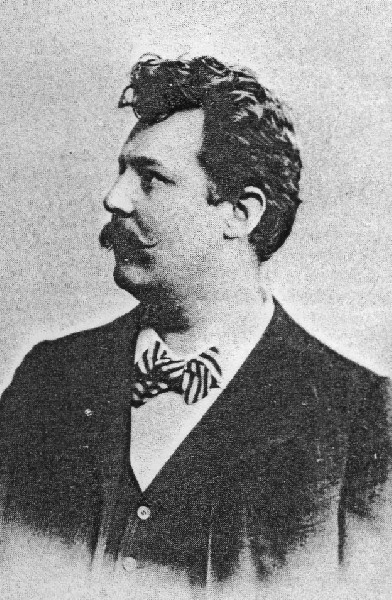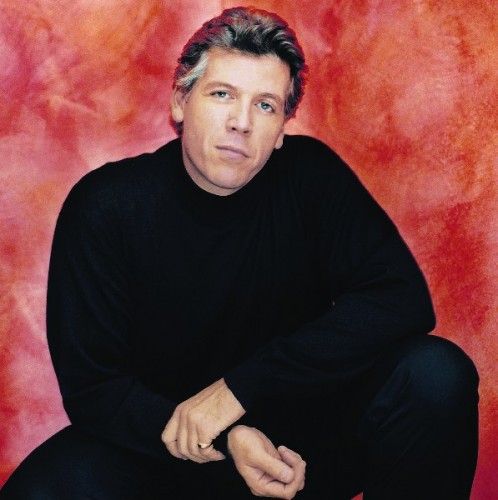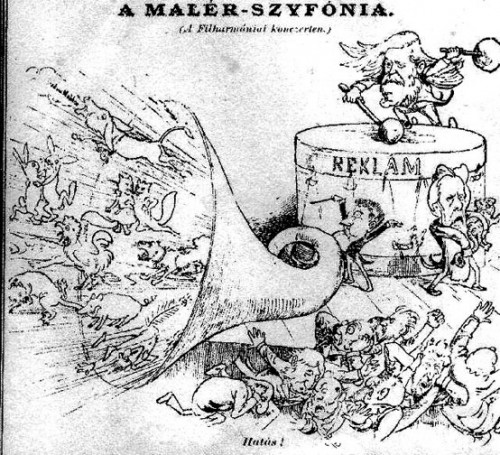Mahler's 7th Symphony at Carnegie Hall
The State Orchestra of Berlin Conducted by Daniel Barenboim
By: Susan Hall - May 15, 2009
On Wednesday May13 at Carnegie Hall in New York, the State Orchestra of Berlin under Daniel Barenboim performed Gustav Mahler's 7th Symphony and the Wayfarer songs, with Thomas Hampson. This was part of the larger series in which all the Mahler symphonies have been performed in order. It wasn't hard to see why this doesn't happen often. I counted at least 80 chairs on the stage before the orchestra sat down.
Mahler's first love, a "beautiful soprano," Johanna Richter, whose image has not been preserved to test hyperboles, is said to have inspired the Wayfarer songs. In German newspapers of the time, she was reported to have been gorgeous, but there is no mention of her voice quality. Mahler stated over and over again that looks didn't matter where sopranos were concerned; what moved him was their talent. Johanna had more successors than one can list, so it's hard to think of him pining too long for one, especially since his future wife Alma later reported that two sopranos, Johanna and a Ms. Nauman, mercilessly teased the inexperienced young Mahler. The composer may be the quintessence of 'emotion reflected in tranquility,' and all the sturm and drang is drummed up from past moments which have long since flown.
Whatever prompted Mahler to compose these songs, he probably had the text of poems Das Knaben Wonderhorn beside him. (He was always to deny borrowing from them). Here is one of many direct lifts:
Wann mein Schatz Hochzeit macht (Wonderhorn)
Wann mein Schatz Hochzeit macht (Wayfarer)
"Inspired," yes. But by Richter?
Thomas Hampson, inarguably America's leading baritone, has made Mahler songs a signature, and for good reason. They are lovely -- with the characteristic descent of a fourth for the cuckoo (no other composer, or human listening to a cuckoo, has ever heard or written anything other than a descending third), some unusual and arresting intervals, and a riveting song line. Hampson's voice was unusually warm having last heard him bemoaning his fate at the end of Onegin, when he sang the title role at the Metropolitan Opera earlier this year.
A baritone of course falls between a tenor and bass, and Hampson's range is broad. Although he altered a line in his beautifully delivered upper range in the fourth song, and decorated a tone when he realized he was going to have to forego the top notes, his subtle adjustments show just how consummate a performer he is. (Carnegie reported that he was suffering from allergies).
A contemporary German cartoon of a Mahler symphony was just the way I heard the 7th. The silence from which many passages emerged struck me as a way of highlighting the fact that Mahler threw everything at the Symphony – including a contrabassoon, base clarinet, and E flat clarinet. Performances of earlier symphonies proved too challenging for the Berlin State Orchestra, but they settled in with the 7th. Certainly any timpanist or drummer would have been thrilled to play a hyperactive part in this symphony. A guitar, mandolin and cowbells joined more conventional instruments to give the work a folk color. (No cow in sight, just in sound). The bandstand, military march and folk songs -- all are here. At times a potpourri of musical styles distracts, but this may have been Mahler's purpose.
Despite the current move away from psychoanalytic interpretations, Mahler himself proclaimed to a trumpeter, who asked why he had to stick on one note so long, that the trumpeter must never have experienced despair.
Unaccustomed intervals pierce the listener, and move the ear to attention -- but as Hampson sings them, he invites, and does not repel. The 7th, on the other hand, often repels with the sheer number and sound of the instruments. In movements two and four, both called "Night Music", we are treated to beautiful melodies, but then left in the 5th movement with the jubilant, ear-splitting arrival of dawn -- the sunrise has never seemed so all encompassing as in this C Major finale.
Barenboim, perhaps because he gave in to the Symphony, held it together not by will, but by non-willing. On Wednesday, he succeeded in making the 7th seem much more than the sum of its hodge podge themes and phrases appropriated by Mahler from his former compositions.
The premier of the Symphony in Vienna in 1909 made a convert of fellow composer Arnold Schoenberg, who wrote: "…this time I felt repose based on artistic harmony – and something that got me going without unsettling the center of gravity, drawing me into its magnetic field…"
This summer, James Levine will conduct Mahler's Sixth Symphony at Tanglewood. Thomas Hampson will sing American songs in Lenox. And all of this is a prelude to the 150th anniversary of Mahler's birth in 2010 when there will be a cornucopia of opportunities at Bard and Tanglewood, in addition to New York and Boston, to become acquainted with this elusive but gigantic composer.





